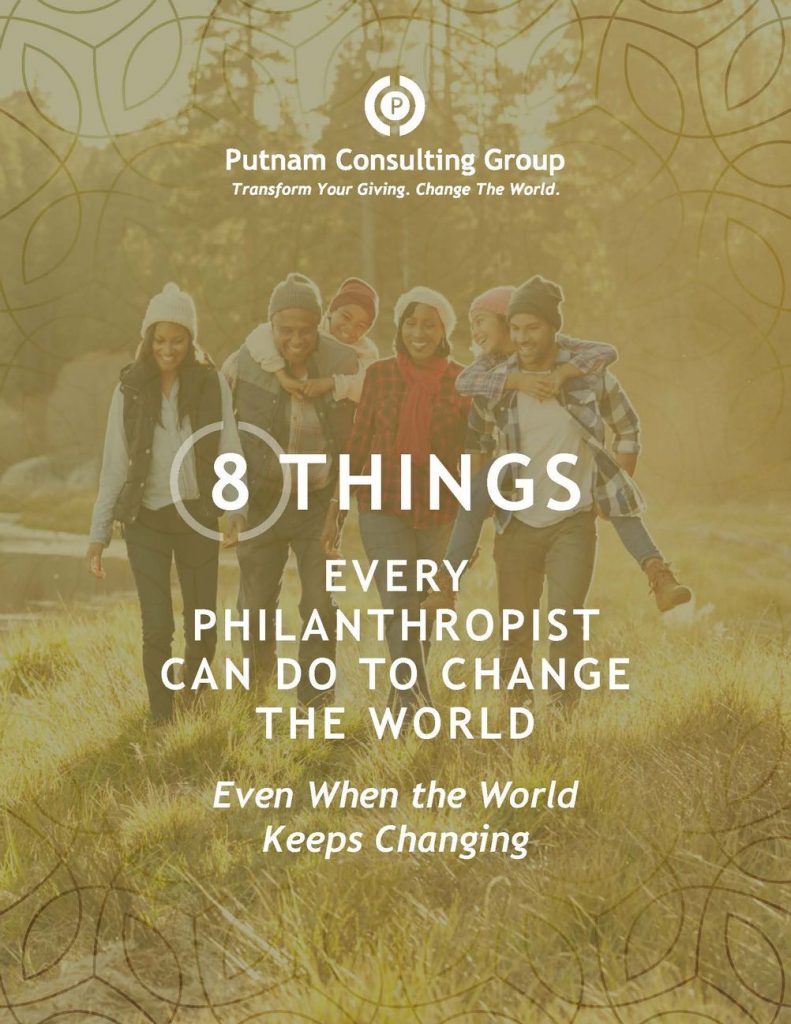Five Potential Pitfalls for Next-Gen Philanthropists
Some of the most common traps advisors can help younger clients avoid.
No doubt as a wealth advisor, you know that over the next 25 years, nearly 45 million U.S. households will transfer over $68 trillion in assets to heirs and charity. And you realize that this wealth transfer isn’t just happening in the United States; it’s happening around the world. India (home to 119 billionaires) will experience a $128 billion intergenerational wealth transfer over the next decade alone.
The portion of these assets used for social good represents an upcoming “philanthropy boom.” Who will be receiving this wealth transfer? Largely millennials. They’re a generation that’s grown up knowing hardship and unemployment, but that’s still more generous than other generations. While the number of dollars they donate hasn’t yet surpassed other generations, the percentage of people donating has.
Millennial donors are different from their parents and grandparents. They often orient themselves as international citizens, prefer more “collegial” forms of governance and focus on causes like civil rights versus sectors such as health care.
Many millennials use technology-centric giving vehicles and approaches, from crowdfunding to impact investing. But they’re also hungry for personal connections and often seek road maps and guidance from their peers.
While it’s exciting to think about how these new approaches, ideas and energy will help solve today’s problems, it’s safe to say that these next-generation philanthropists are still human. They’ll need help sidestepping some universal pitfalls that often go unnoticed and hold donors back from their full potential. I write about them in my book Delusional Altruism: Why Philanthropists Fail To Achieve Change and What They Can Do To Transform Giving.
Five Common Traps
Here are five of the most common traps you can help your clients avoid:
- Scarcity mindset. Knowing that next-generation philanthropists are “hyper-focused on seeing the needle actually move” on issues they care about, I caution them not to operate with a scarcity mentality. A scarcity mindset is a belief system that misguides your thinking and fools you into believing that you’re saving money by putting all your money toward “the cause” instead of all the people and infrastructure that serves the cause. It gives you the ridiculous assurance that the less you invest in talent, infrastructure and knowledge, the more you can help others.
- Asking the wrong questions. “How do we do it?” “What’s the best way to do this?” and “Can we start right away?” are the top three misguided questions young philanthropists ask because they generally plan in a strategic vacuum. Jumping to the tactical “how” quickly short-circuits our effectiveness if we haven’t already figured out what we want to do and why. Asking for the “best” way forward squashes creativity by not entertaining all the possibilities before narrowing down the options. Asking if you can start right away generally jumps right past risk assessment of cost, strategic fit and difficulty of implementation.
- Lack joy in giving. Philanthropy is hard work. Being philanthropic can test our endurance and try our spirits. But philanthropists should gain more than they give. Giving should bring joy. The joy of knowing you helped improve someone’s life. The joy of realizing that with your philanthropic contribution, a village will have clean drinking water, fewer people will die in car accidents or an emerging leader has the resources to put her dream for gender empowerment into action. Just as important, the day-to-day work we do should also bring us joy, whether it’s speaking, planning, meeting with grantees, traveling the globe, managing people or reviewing proposals. There’s a lot involved in being an effective funder. Encourage your client to do what they love and outsource what they don’t.
- No North Star. If your clients have only a vague idea of what they want to accomplish with their giving, they’ll have trouble finding their way. But if they understand their mission or why they exist, have deeply held values of who they are and how they want to show up, and have a clear vision of what future state they want to achieve, they’ll have created a road map for their strategy. Shorter-term 12-month strategic sprints rely on this overarching positioning, enabling adaptable, efficient and effective forward momentum.
- Unclear about top priorities. If they genuinely want to move the needle on a cause, whether through a family office, foundation, donor-advised fund or corporate giving program, everyone needs to understand the top three or four priorities to achieve their strategy. At the same time, if they want a team involved in implementing their top priorities, it’s good to engage these people in determining the priorities. Buy-in is helpful. Everyone needs to sprint together, knowing who’s accountable for what and each person’s role in addressing that priority.
This article was originally written for and published by WealthManagement.com.
© 2020 Kris Putnam-Walkerly. All rights reserved. Permission granted to excerpt or reprint with attribution.
If you need help implementing any of these ideas, let’s talk!
You can email me, call me at +1.800.598.2102, or schedule a call.
Navigate the unknown with confidence!
This free download will help you create a powerful giving plan in radically uncertain times.
So many funders I talk to lately are feeling overwhelmed (and exhausted) because conditions keep changing and it’s hard to plan for an unknown future. But while the future is uncertain, we don’t have to be.
You can’t afford to “wait and see.”With these practical how-tos, you can pivot with purpose!








